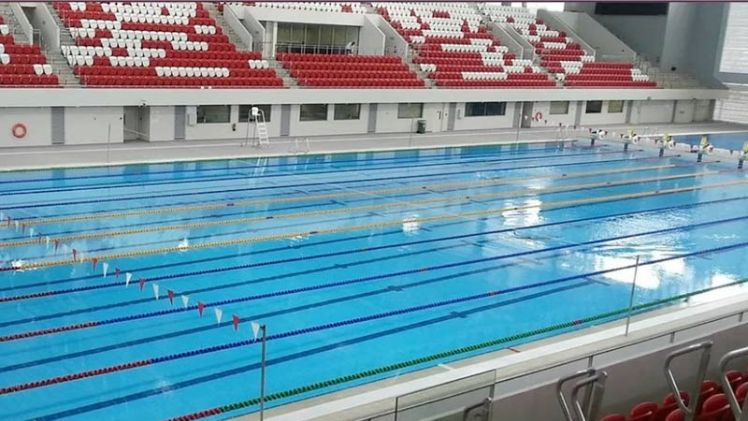
How Many Gallons in an Olympic Swimming Pool. Olympic swimming pools are marvels of engineering and design, serving as the stage for some of the most iconic moments in sports history. These colossal structures are not only impressive in size but also in the sheer volume of water they hold. In this article, we will delve into the depths of Olympic swimming pools, exploring the intricacies of their dimensions and answering the question that may have crossed your mind: How many gallons are there in an Olympic swimming pool?
The Olympic Swimming Pool’s Standard Dimensions
To comprehend the volume of water an Olympic swimming pool can hold, it’s essential to first understand its standard dimensions. According to the International Swimming Federation (FINA), the regulatory body for aquatic sports, an Olympic-size swimming pool must be 50 meters in length, 25 meters in width, and have a minimum depth of 2 meters.
These dimensions are consistent across all Olympic swimming events, whether it’s the freestyle, breaststroke, backstroke, butterfly, or the individual medley. The uniformity in size ensures a level playing field for athletes from different countries and provides a standardized environment for world-record comparisons.
Calculating the Volume of an Olympic Swimming Pool
To determine the volume of an Olympic swimming pool in gallons, we can use the formula for calculating the volume of a rectangular prism:
Volume=Length×Width×Depth
Applying this formula to the standard dimensions of an Olympic pool (50m x 25m x 2m), we get:
Volume=2500 m3
Now, to convert cubic meters to gallons, we need to know that 1 cubic meter is approximately 264.172 gallons. Therefore:
Volume in gallons≈660,430 gallons
So, a standard Olympic swimming pool holds approximately 660,430 gallons of water.
Water Conservation Measures in Olympic Pools
Given the enormous volume of water required to fill an Olympic swimming pool, water conservation is a significant consideration. Many modern Olympic venues implement various measures to minimize water usage and waste.
One common practice is to use advanced filtration systems that recycle and purify the water. These systems can remove impurities and maintain water quality, allowing for extended use without frequent draining. Additionally, some venues collect rainwater to supplement pool water, reducing reliance on municipal water sources.
Fun Comparisons: Olympic Pools and Everyday Water Usage
To put the vastness of an Olympic swimming pool into perspective, let’s compare its volume to everyday water usage. The average bathtub holds about 36 gallons of water. Therefore, an Olympic swimming pool contains the equivalent of over 18,000 bathtubs!
Another interesting comparison is with the average backyard swimming pool. While the size of residential pools can vary, a common size is around 16 feet by 32 feet with a depth ranging from 3 to 8 feet. Even a relatively large backyard pool, when compared to an Olympic pool, is dwarfed in volume.
Water Temperature Considerations
Maintaining the right water temperature is crucial for the comfort and performance of swimmers during competitions. Olympic regulations specify a temperature range of 25 to 28 degrees Celsius (77 to 82.4 degrees Fahrenheit). Achieving and maintaining this temperature in such a large body of water requires sophisticated heating and circulation systems.
These systems play a vital role in ensuring that the pool remains within the specified temperature range, providing optimal conditions for swimmers and minimizing the risk of injuries related to cold water exposure.
Notable Olympic Swimming Pools
Throughout the history of the Olympic Games, various cities have hosted the swimming competitions, each featuring its own unique and memorable swimming pool. Here are a few notable examples:
1. The Water Cube (Beijing 2008)
The National Aquatics Center, nicknamed the “Water Cube,” in Beijing, China, hosted the swimming events during the 2008 Summer Olympics. The building’s distinctive design, inspired by the structure of water molecules, became an iconic symbol of the Games.
2. London Aquatics Centre (London 2012)
The London Aquatics Centre, designed by renowned architect Zaha Hadid, was the venue for swimming and diving events during the 2012 Summer Olympics. Its wave-like roof and innovative architecture left a lasting impression.
3. Maria Lenk Aquatics Centre (Rio de Janeiro 2016)
Named after Brazilian swimmer Maria Lenk, this venue in Rio de Janeiro featured two swimming pools—one for competitions and another for warm-ups. It showcased Brazil’s commitment to hosting world-class sporting events.
Conclusion:
The question of how many gallons are in an Olympic swimming pool unveils the immense scale of these aquatic arenas. With a volume exceeding 660,000 gallons, these pools are not only engineering marvels but also integral components of the Olympic experience. As we marvel at the performances of athletes gliding through the water, it’s worth appreciating the meticulous planning and technology that go into creating and maintaining these colossal bodies of water on the grandest stage of international sports.
